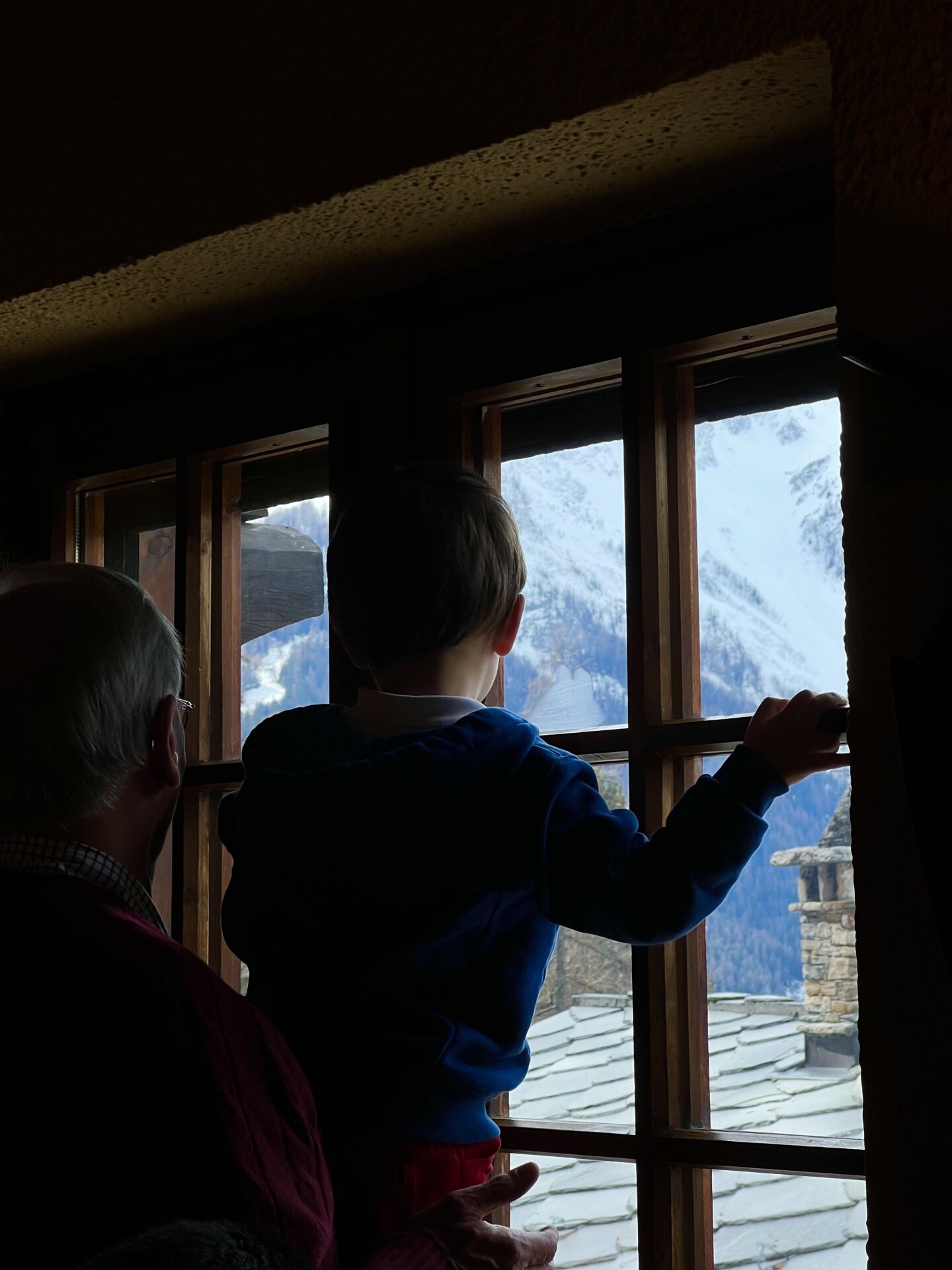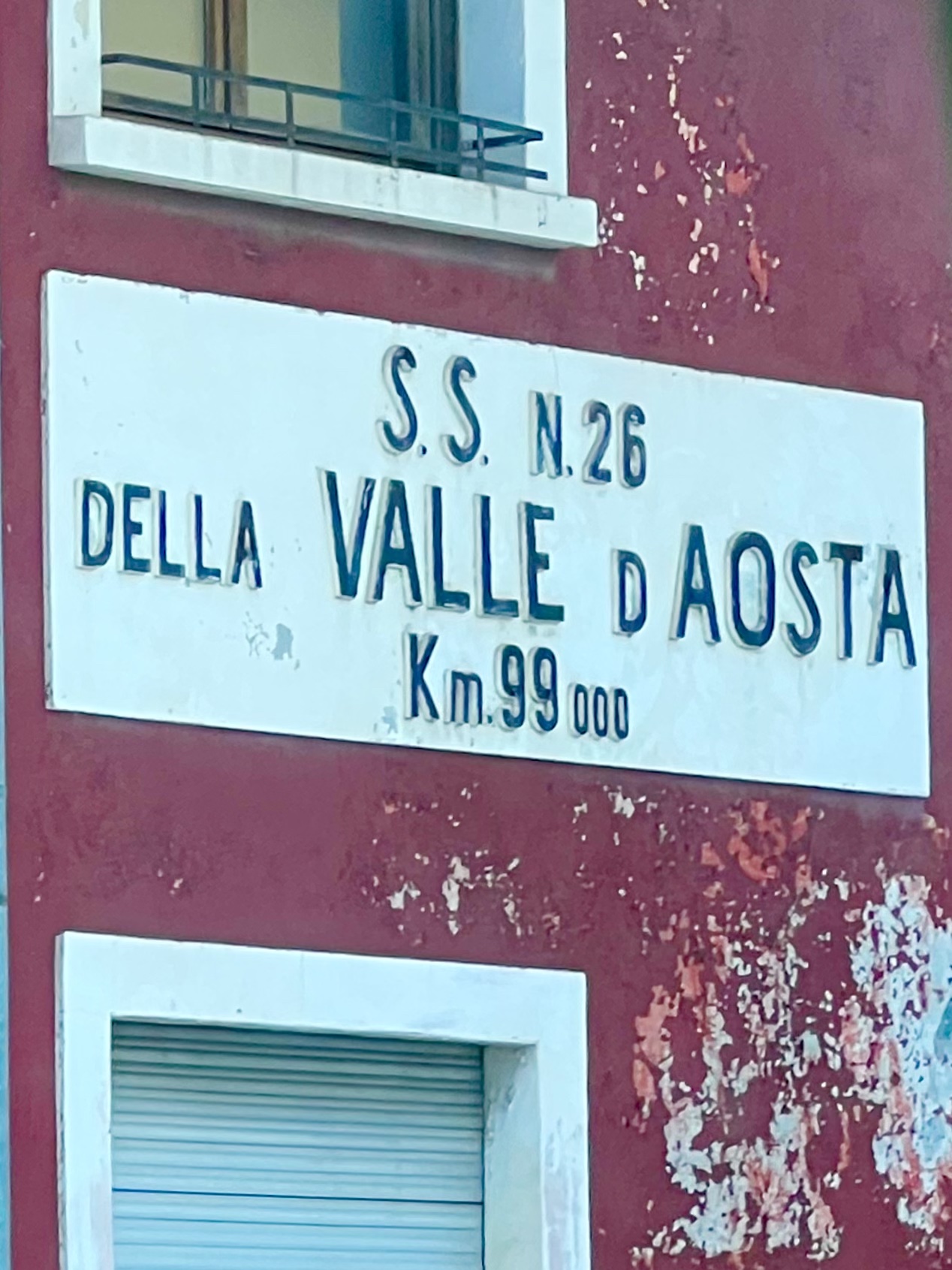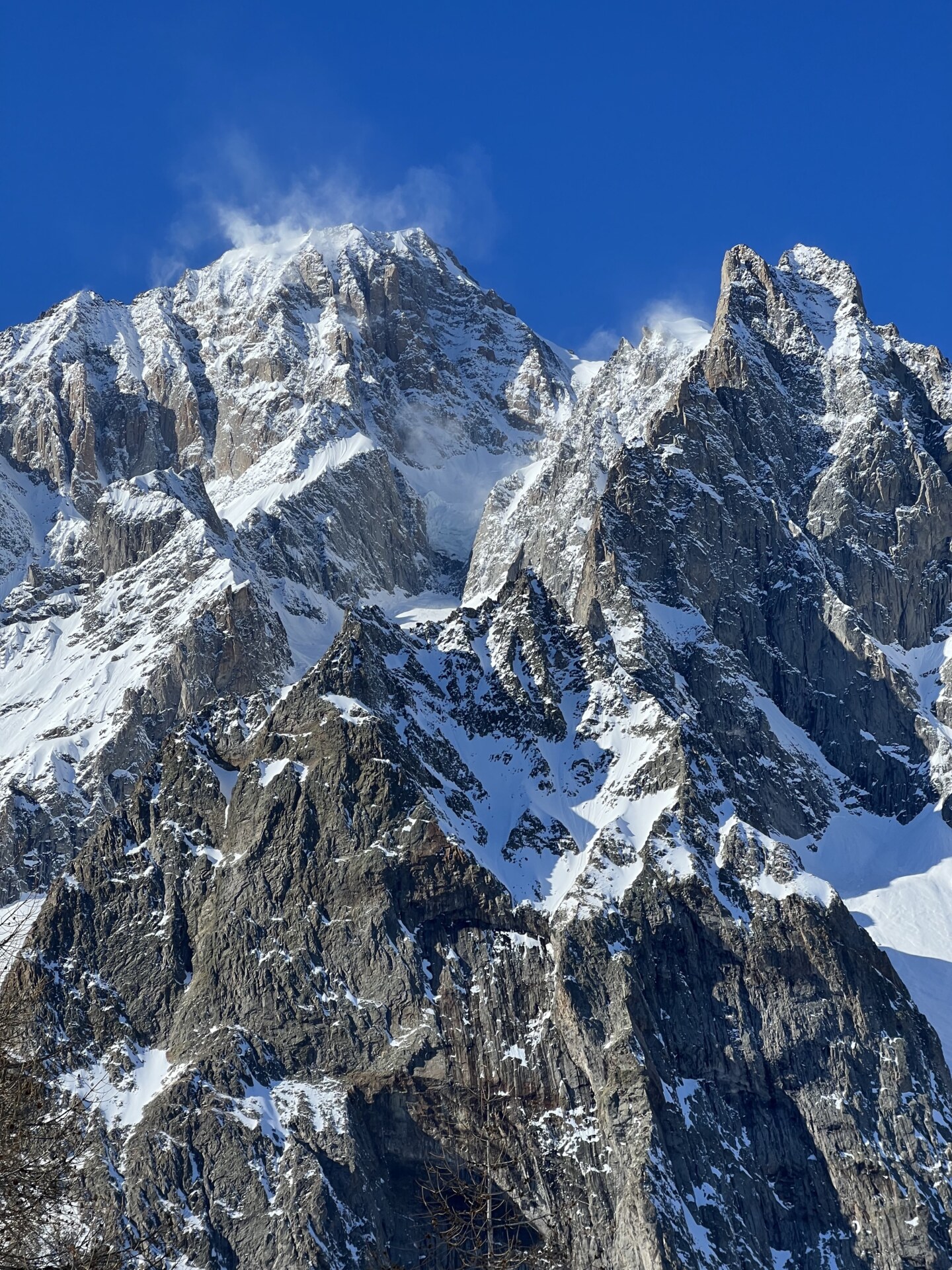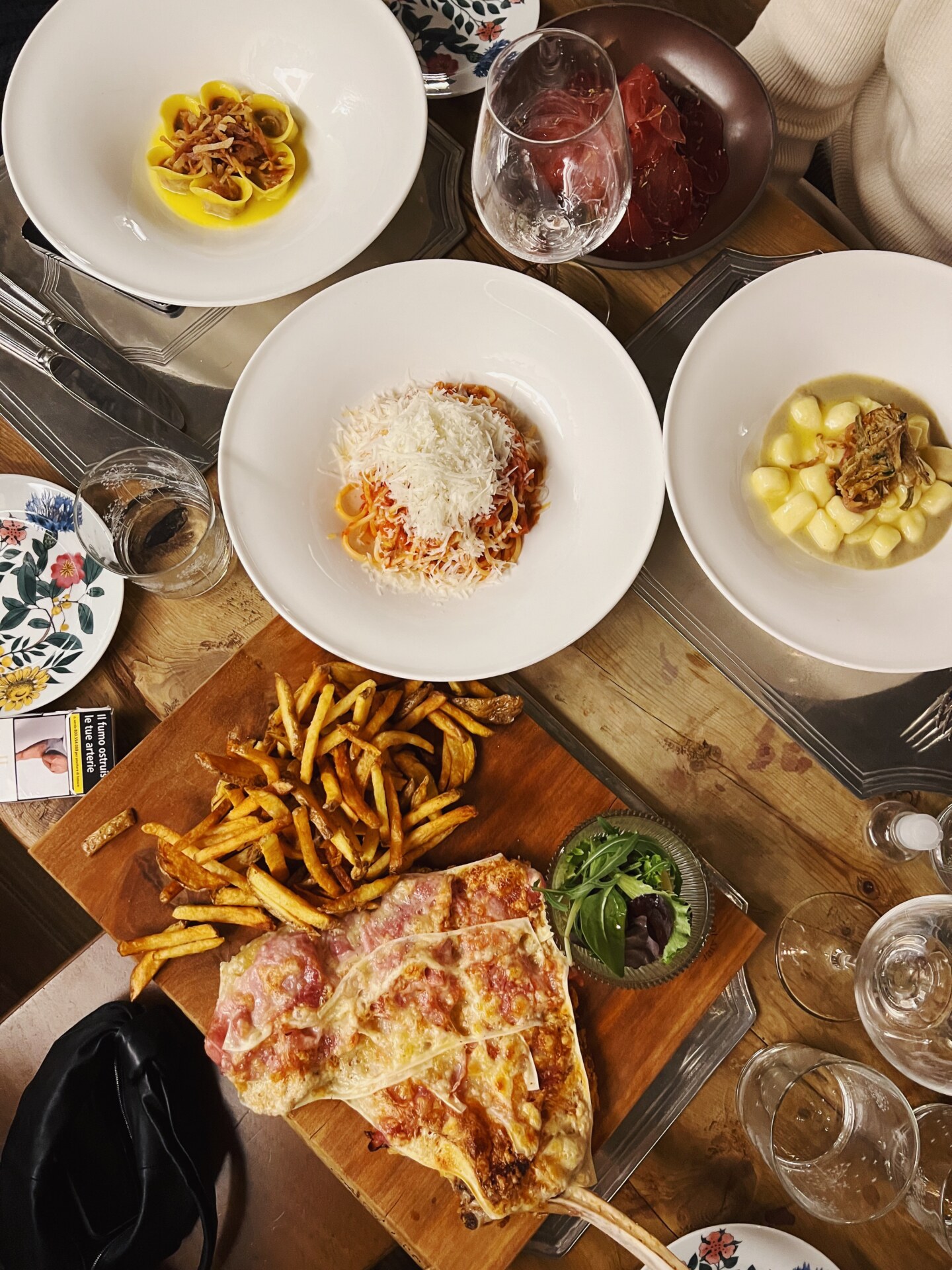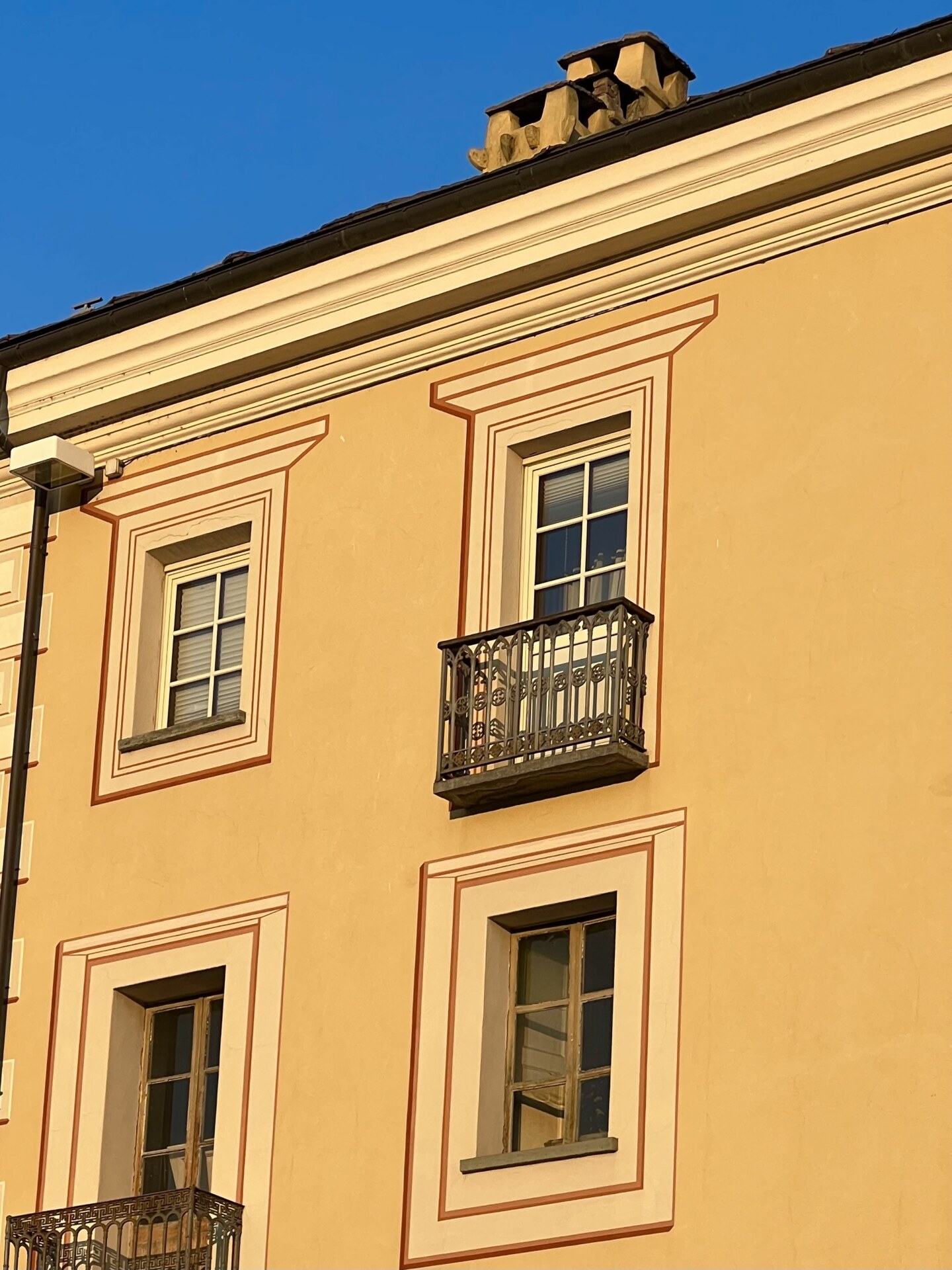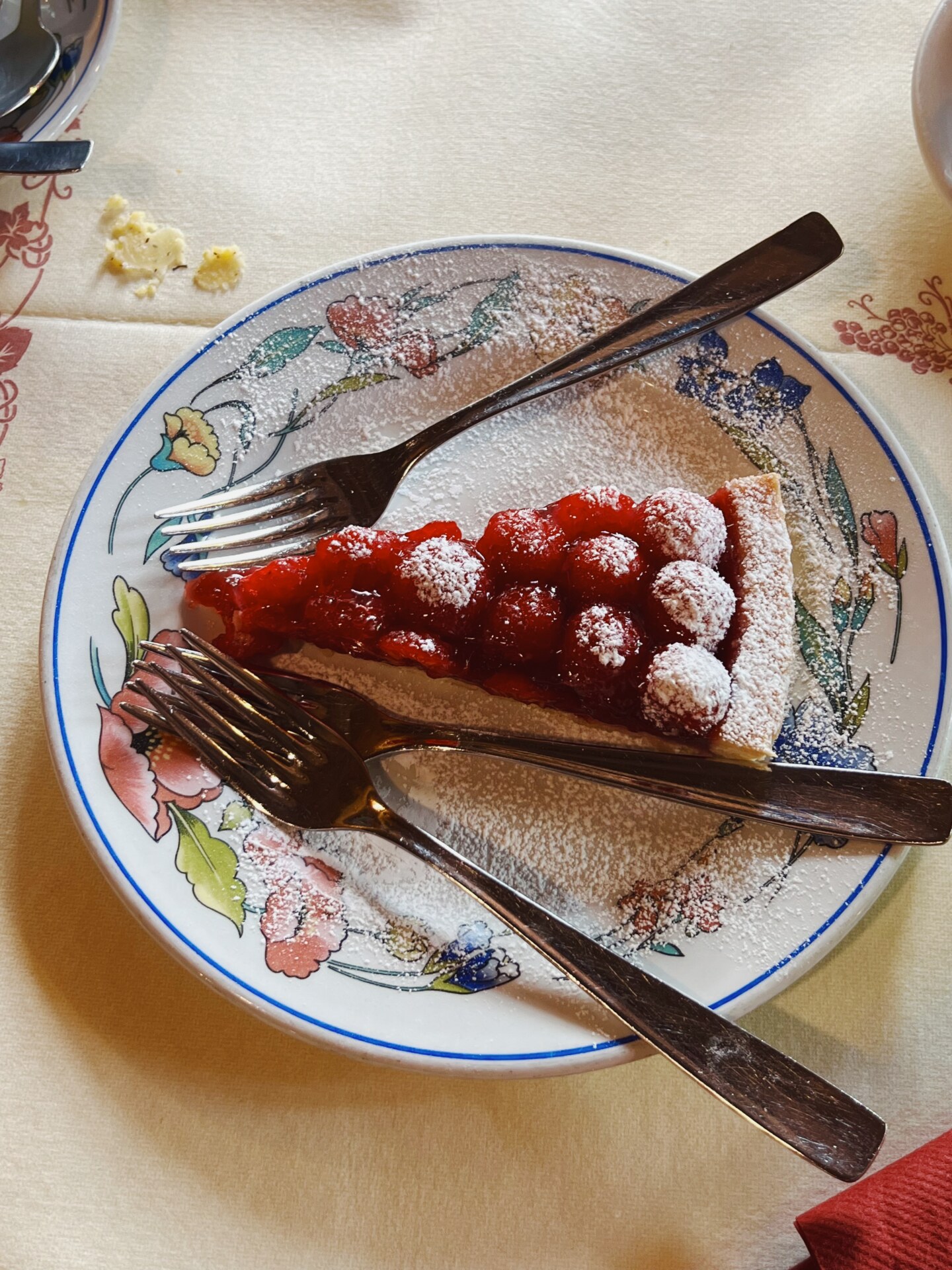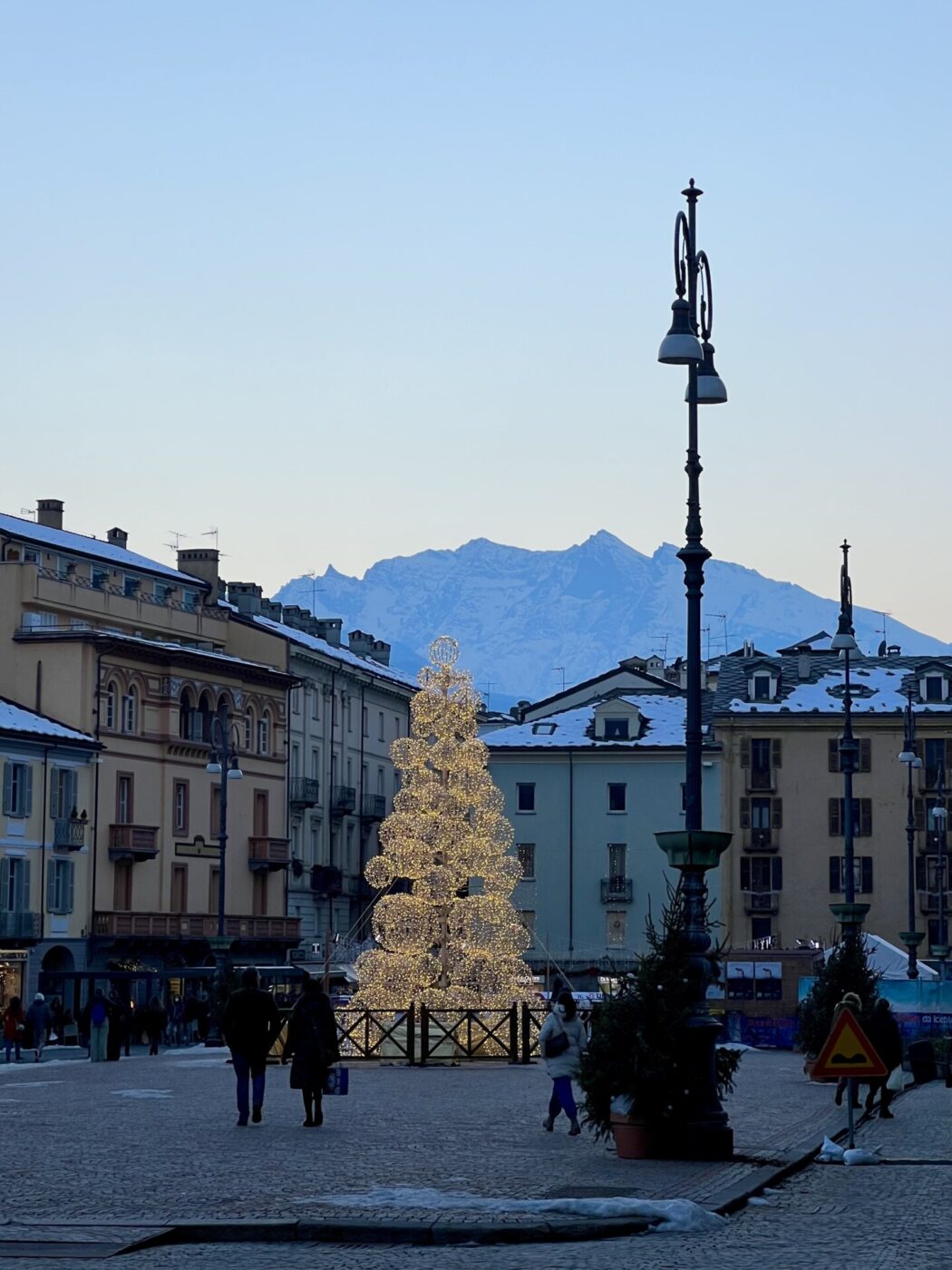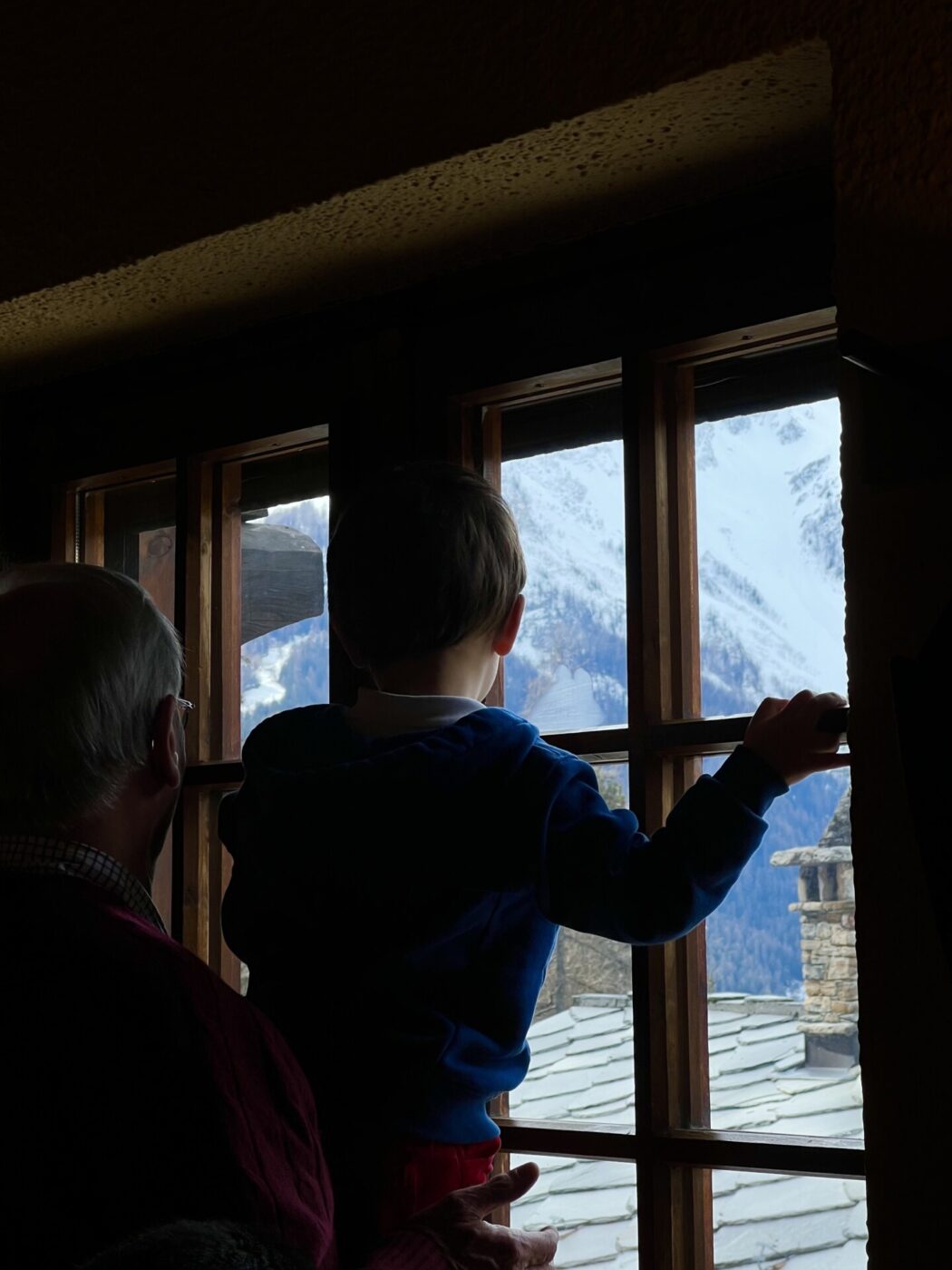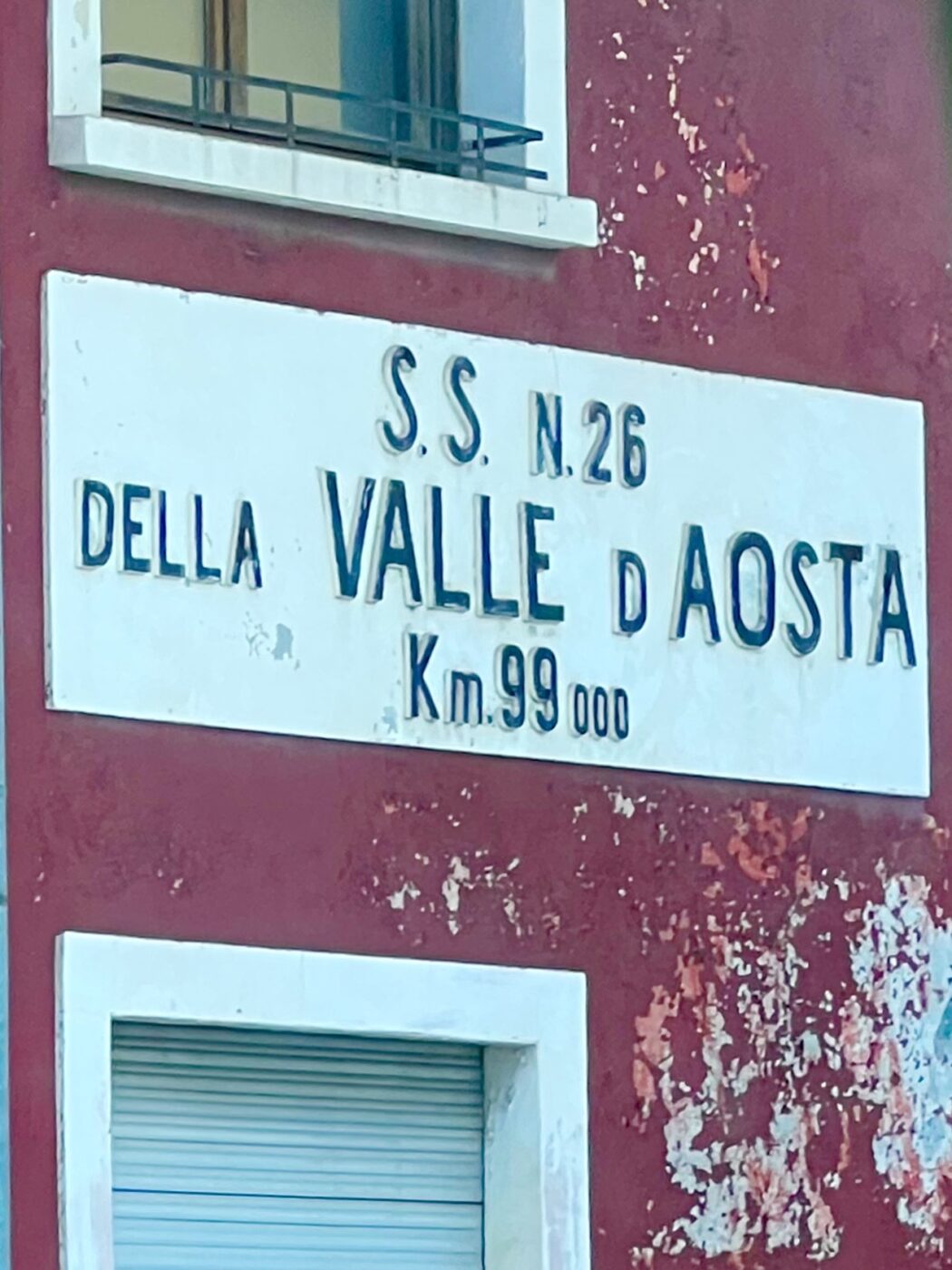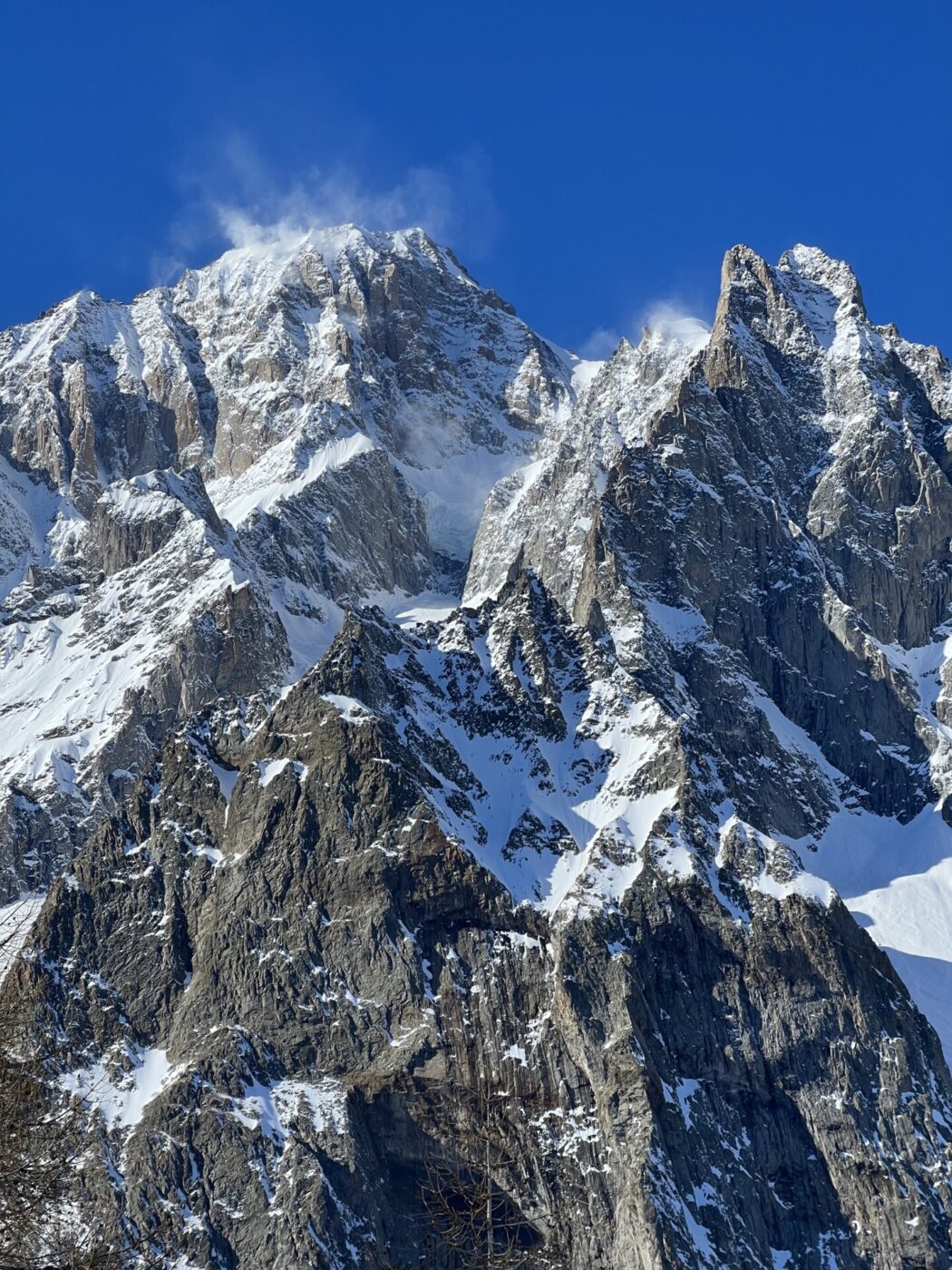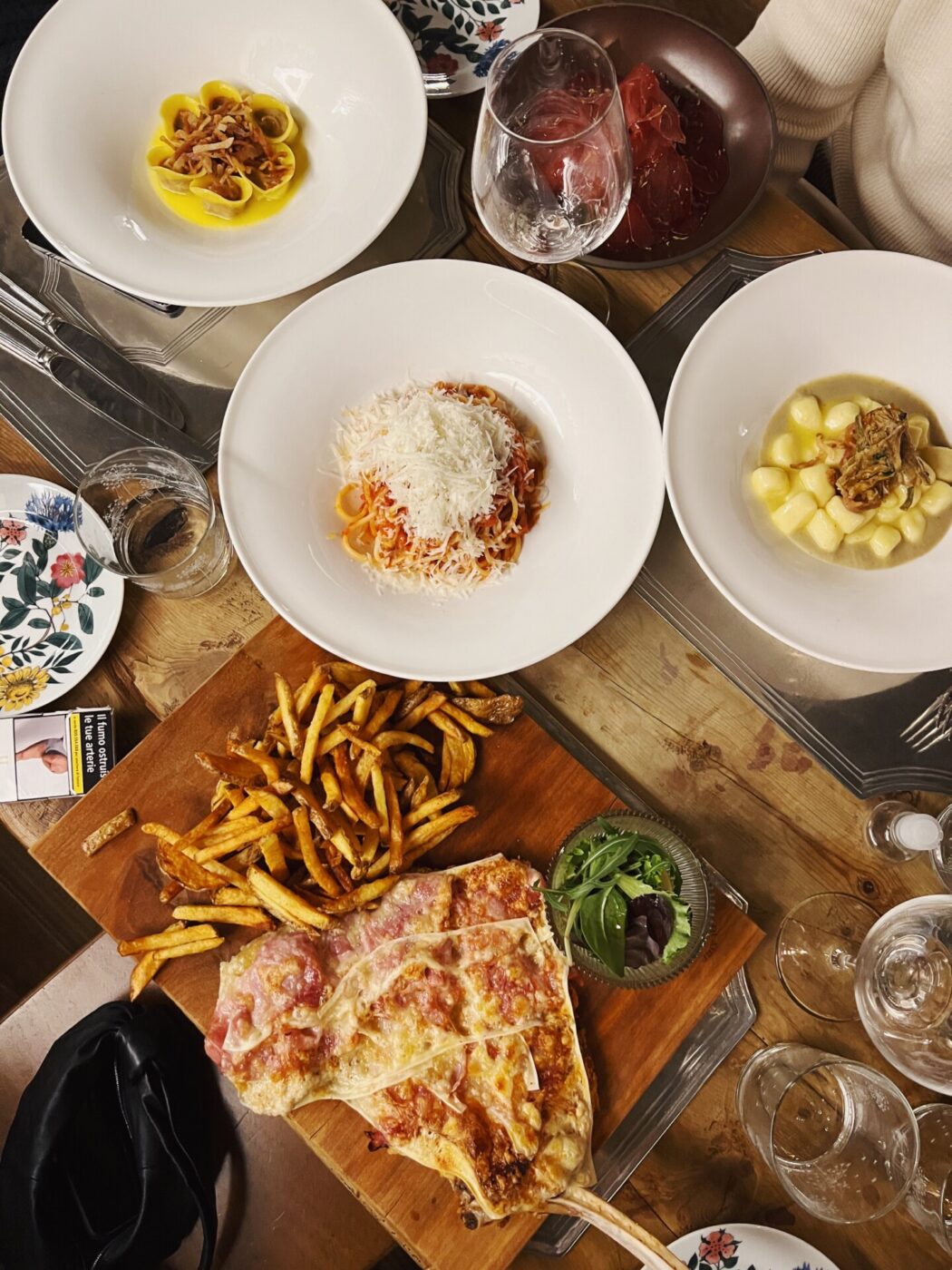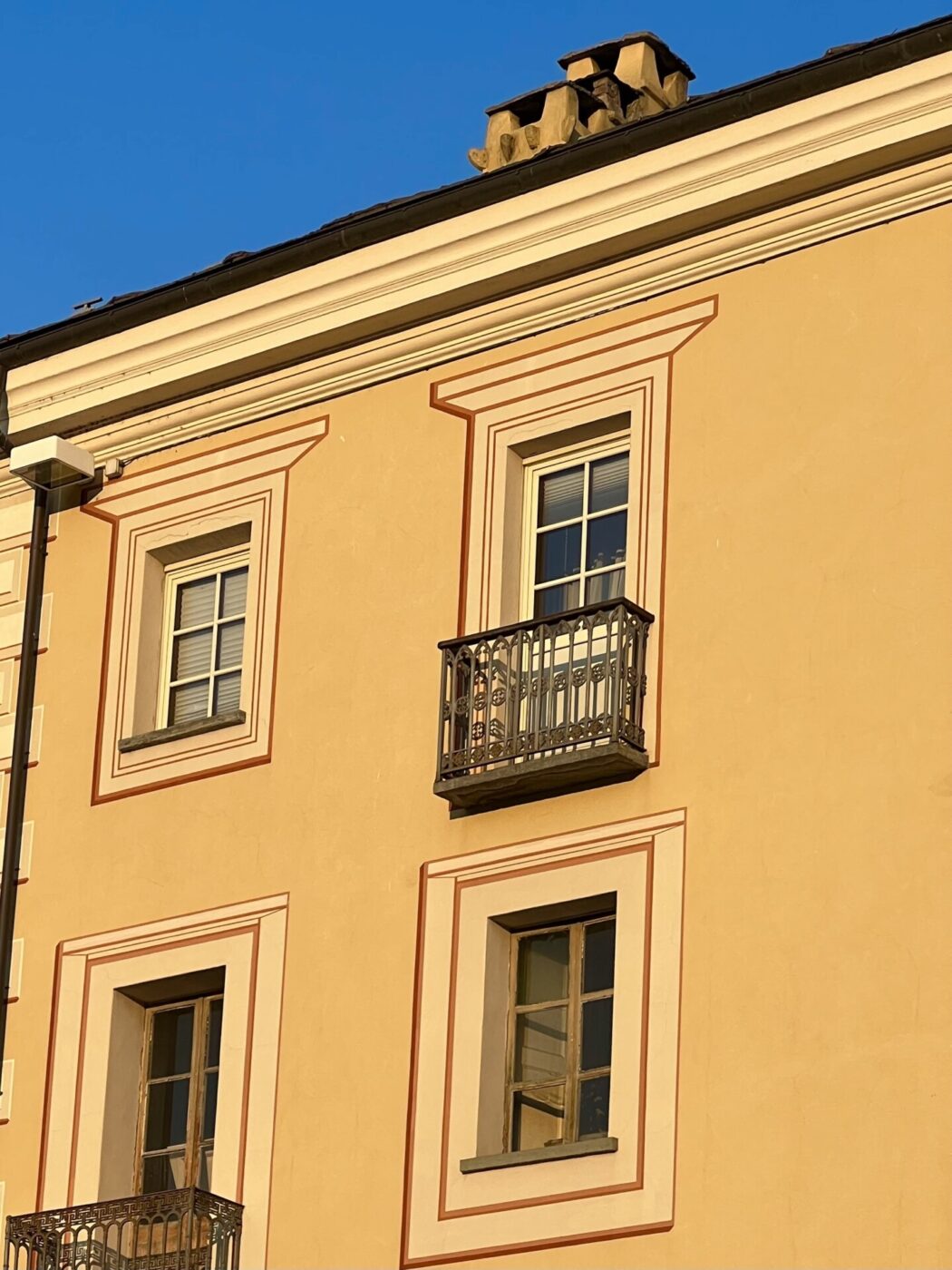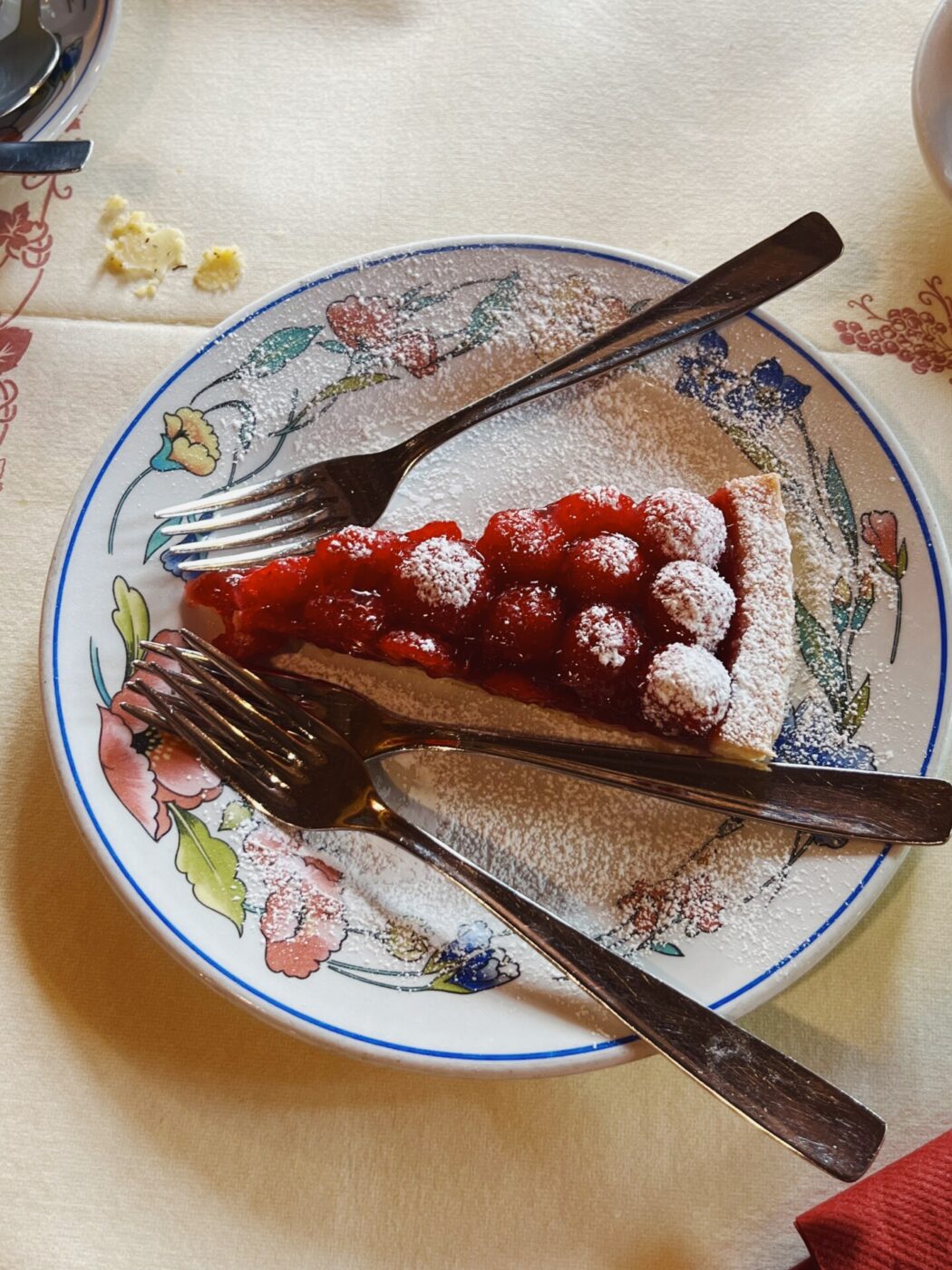Valle D’Aosta packs quite a punch, despite being the smallest region in Italy: the valley is home to a plethora of high peaks that also happen to be the tallest in Europe–Monte Bianco (Mont Blanc in French), the Matterhorn, Monte Rosa, and Grand Paradiso–plus some of the country’s best skiing, most jaw-dropping vistas, and underrated gastronomy. (We’re looking at you fonduta! This Italian version of fondue is made with local Fontina, butter, milk, and egg yolks.)
Like all border areas, Valle D’Aosta is the true melting pot of its neighbors France, Switzerland, Piedmont, and Lombardy, and the region’s historic Franco-Provençal influence left lasting effects on the language, the architecture of the massive and fortified castles, and the nature of the people. We’ve geared our three-day itinerary of Valle D’Aosta towards those of you who want to see a bit of it all. Here, your detailed travel plan–best experienced over a weekend–to make the most of Italy’s 3,263-square-kilometer region.
Getting There: Technically, Aosta has an airport, but you’ll have better luck finding flights to the nearby city of Turin and taking the train, or renting a car and driving north. As far as getting around, there are numerous bus routes that leave from Aosta, but driving is the best way to make the most of the region.
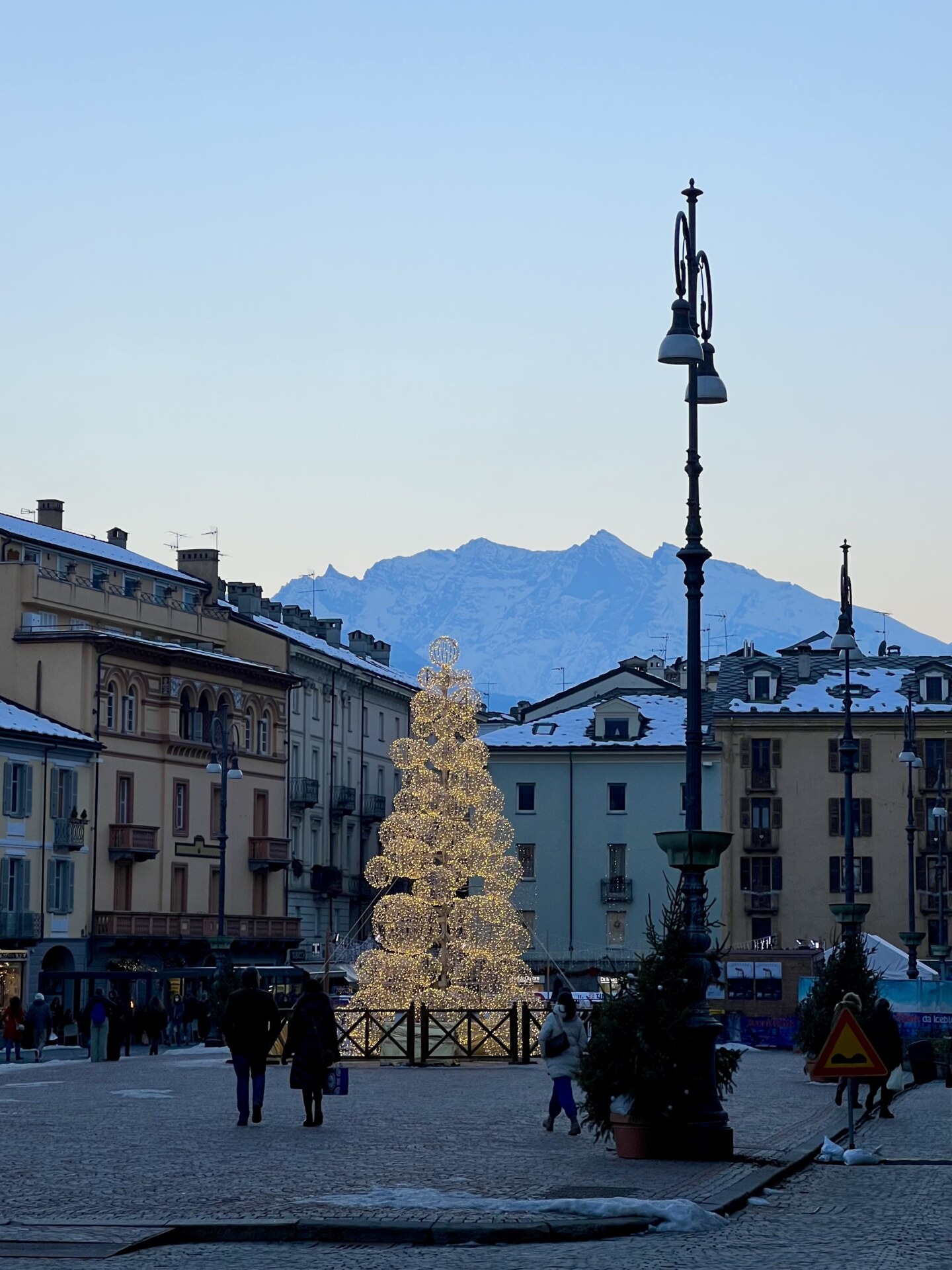
DAY 1 – Start in Aosta, the Capital and Heart of the Valley
Stay: From the outside, bed and breakfast Le Coffret in Saint Marcel is a typical example of Valdosta architecture; inside, it’s a haven of contemporary design. After years of restoration, this 1779 chambre d’hôtes has returned to its former glory, retaining an old-world atmosphere with a traditional mountain character thanks to rooms with stone walls, wood-beamed ceilings, and contemporary furnishings. Start each day with homemade muffins, madeleines, biscuits, cakes, and apple puree along with cheese, butter, and milk sourced from a nearby farm.
Morning, 9 AM: First coffee and a slice of semolino cake at Patisserie D’Europe. Founded by the Romans in 25 B.C., the city of Aosta sits at the fork of a road that either takes you to Switzerland or to France. Spend the morning touring–and thinking about–the glories of the Roman era, with stops at the Arch of Augustus, the Porta Praetoria (one of the few Roman gates still perfectly preserved), the Roman Theatre (which becomes a concert venue in the summer), and the city walls. Visit the small church of Sant’Orso to see beautifully preserved Ottonian frescoes.
If you’re here in January, you just might be in luck: the thousand-year-old Sant’Orso Fair is held annually on January 30th and 31st, when craftsmen from all over the valley exhibit their wooden works. According to tradition, locals buy a new piece every year as a good omen. If you’re unsure what to get, look for a grolla, or friendship cup, a carved wooden chalice with multiple spouts to drink from. In Aosta, grappa is mixed with coffee and various other liquors or spices, heated, poured into the cup, lit on fire, and passed around between friends, family, and even strangers.
Lunch, 1 PM: On Via di Porta Pretoria, stop into Antica Bottega dei Sapori’s new spot, Le Bar à Vin, for a quick, casual meal of some of the region’s specialties. Try small plates of Valdostan cold cuts, motsetta (a traditional dried meat of either beef, venison, or chamois), and Tometta di Montagna, melted with thyme and honey, or bigger portions of gnocchi with funky blue d’Aosta, tagliatelle with speck and chestnuts, and a croque monsieur with fontina and Arnad lard. Their extensive wine list has many local, national, and transalpine labels.
Afternoon, 3 PM: Spend the afternoon driving through the valley pretending to be Valdostan royalty. The region is dotted with dozens of huge, fortified castles, and you could spend days exploring them, but here are three of our favorites. Right across the border from Piedmont, the Issogne Castle was renovated by the Challant family from 1490-1510, and, although the gothic exterior is quite plain, the inside is in the style of a Renaissance residence and adorned with rare Alpine frescoes. Across the river, perched on a high peak, the 14th-century Verrès Castle is considered one of the most impressive buildings from the Middle Ages, as the entire complex is fortified by a massive stone wall. The restored Fénis Castle, another residence of the Challant family until 1716, is one of the best to tour, since the rooms are set up as they would’ve looked in the 18th century.
Aperitivo, 6 PM: Returning towards Aosta in the afternoon, stop for a tasting in the cellar at La Crotta di Vegneron, a winegrowers’ cooperative founded in 1980 that now produces 200,000 bottles annually from two indigenous DOC grapes: Chambave and Nus.
Dinner, 8 PM: Pull off the highway into the unassuming Trattoria di Campagna, where they’ve been serving typical Valdostan dishes for the past 40 years. The simple, homely dining room is paired with impeccable, friendly service, a beautiful outdoor veranda, and Michelin-recognized dishes. Try the polenta concia, crépe valdostane with fontina cheese and ham, fonduta, and platter of grilled, fried, and sautéed porcini. Plus, their wine list, with many regional offerings, previously won the best in Italy by Milano Wine Week.

DAY 2 – Continue to Towering Mountain Destinations Courmayeur & Monte Bianco
Stay: With cozy sofas around a crackling fireplace, aromas of old wood, and vintage prints on the walls, it’s easy to see the charm of Alpine tradition at Auberge De La Maison, a stone and wood mansion in the heart of Entrèves. The grand mountain home houses 33 rooms, all charmingly different from each other: some with matching fabric and curtains, others with ceramic stoves. The hotel’s on-site dining, L’Aubergine Restaurant, has a stunning view of Monte Bianco, while the Spa Maison d’Eau–with a mountain waterfall pool and Finnish sauna–is especially incredible for decompressing, relaxing, and regenerating after a day of hiking or skiing the nearby Alps.
Morning, 9 AM: Buongiorno, Monte Bianco! Begin your day with an ascent up Western Europe’s highest peak, Monte Bianco, via the Skyway Monte bianco: a thrilling state-of-the-art cable car system that opened in 2015. The windowed car ascends through three stations–Courmayeur/The Valley (1,300 m), Pavillon/The Mountain (2,173 m), and Punta Helbronner/The Sky (3,466 m)–with activity opportunities for everyone from non-skiers to the most seasoned mountaineers. Each part of the journey offers truly unparalleled, breathtaking, 360º views of the snow-capped peaks. (And you might even recognize the skyway from the 2016 movie Kingsmen: The Golden Circle).
Lunch, 1 PM: Once back in Courmayeur, head to Baita Ermitage, either by car or on foot, for a traditional mountain lunch of polenta paired with roasted or stewed meats, crépes, and escalope alla valdostana. Set at an altitude of 1,450 meters, the tavern boasts a perfect view of Monte Bianco from the panoramic terrace. Although minimal, their wine list still allows for the right pairings.
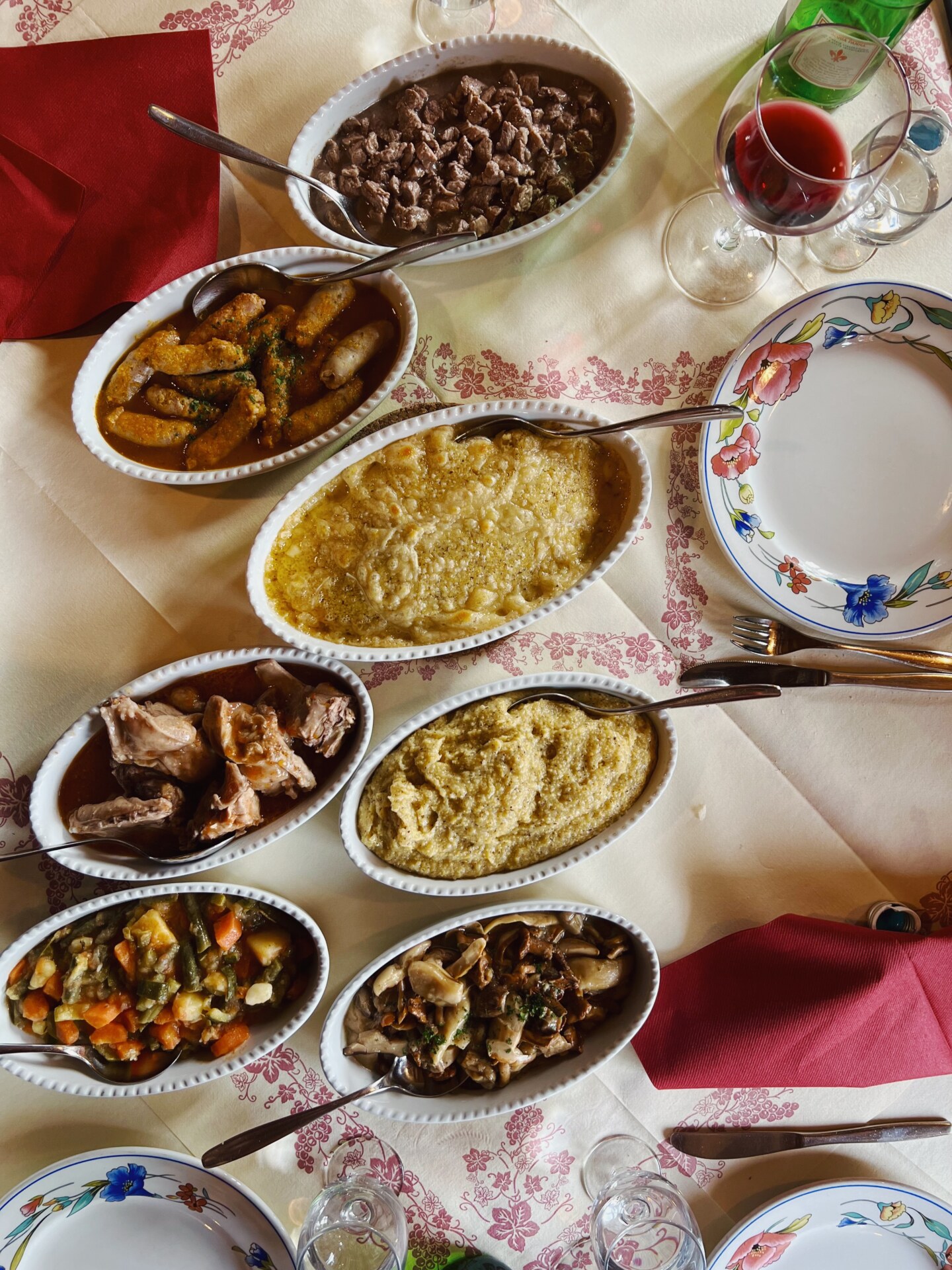
Baita Ermitage
Alternatively, have lunch at Cadran Solaire, where the restaurant explores the culinary traditions of Valle d’Aosta through a creative, contemporary lens. The elegant space at the base of Monte Bianco features the ancestral recipes of the Garin family; make sure to explore the chalet’s secret rooms, and order the tris de polenta and fonduta.
Afternoon, 3 PM: Grab a pair of snowshoes and explore the dreamy landscapes of Monte Bianco along the Val Ferret. For a more difficult route, take the Val Vény to the Toula glacier with an experienced guide.
For those who prefer to exercise their wallets rather than their bodies, stroll through the town of Courmayeur for an afternoon of shopping. Hit Catelier for antiques and vintage decor; Aurora Ethical Beauty for natural, vegan, and cruelty-free skin care products; and L’Artisana (located under the Abbé Henry Square) for artifacts from traditional craftsmen in Aosta. Pet lovers must visit Prince and Princess, Italy’s first true pet luxury fashion brand.
Aperitivo, 6 PM: Stop at 4810 Courmayeur for a spritz or wine while the sun sets over the surrounding Alpine peaks. Nibble on house-cured meats and cheeses, crudités, stuffed flatbreads, and whole wheat pizzas.
Dinner, 8 PM: A 10-minute drive from Courmayeur, Cafè Quinson in Morgex is situated at the foot of Monte Bianco. Here, Chef Agostino Buillas plays with Valdostan cuisine, offering a daily changing menu according to his mood and inspiration. Their insane wine list features over 1,000 labels, many of which are local.
However, if you’ve visiting between December and March, you must try fonduta and other typical mountain-inspired delicacies at Lo Sciatore (which translates to “the skier”). The restaurant’s rustic charm is warm, inviting, and pays homage to the region’s long skiing heritage.
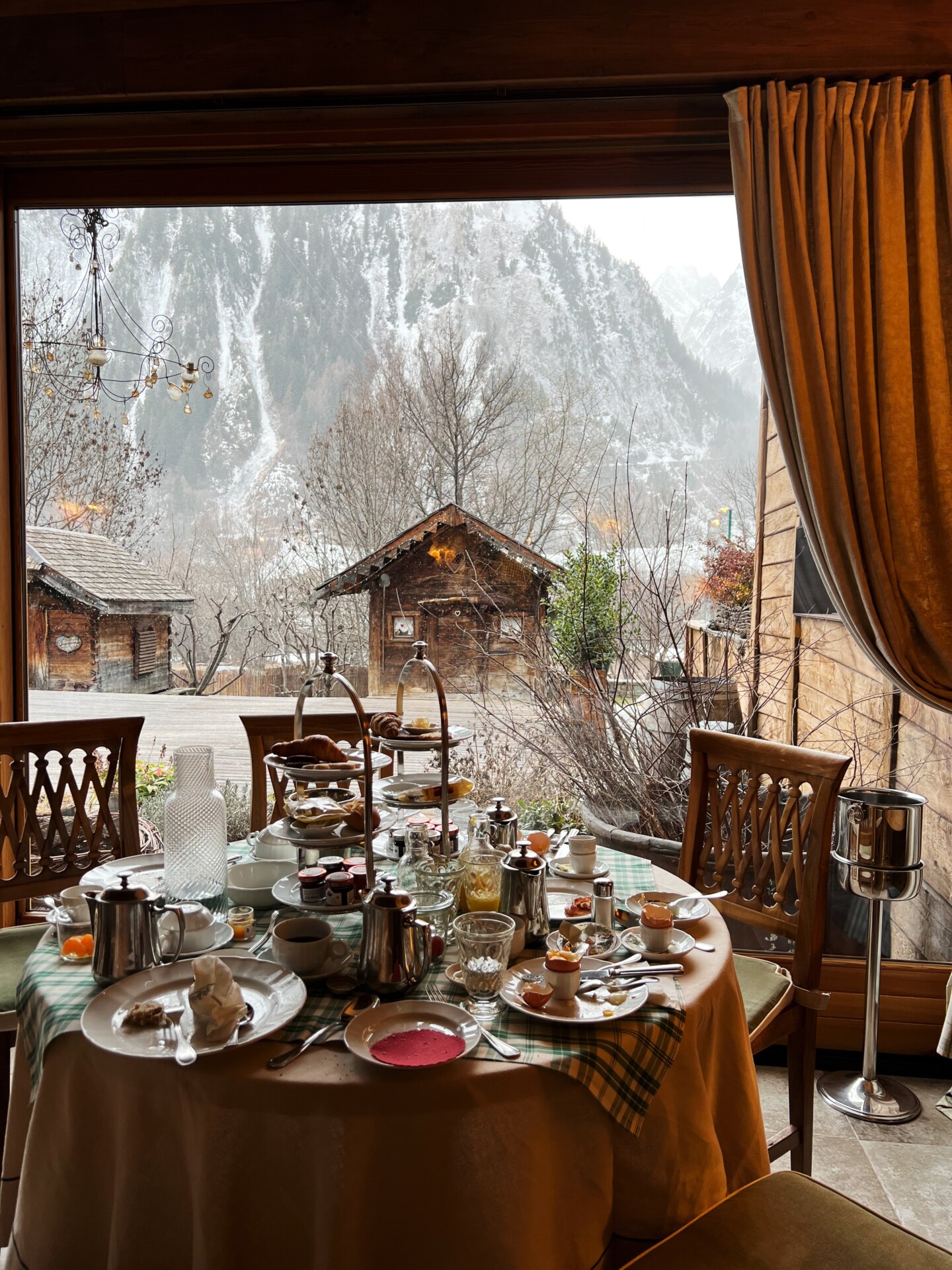
Auberge De La Maison
DAY 3 – Head South to the Charming City Cogne and the Expansive Gran Paradiso National Park
Stay: A pearl at the foot of the Gran Paradiso glacier, Bellevue Hotel & Spa is surrounded by chamois, ibex, marmots, and grazing cows. The inside of the old mansion is like an upscale mountain cabin, with views of the valley through the huge windows in each room. Their four on-site restaurants source produce from their garden, and their new 1,200-square-meter wellness area is a haven for relaxation.
Morning, 9 AM: Trek in the Parco Nazionale del Gran Paradiso, half of which is located in Aosta and the other half in northern Piedmont. The first national park established in Italy, this 70,000 hectare park was originally a royal hunting reserve and was only declared a national park in 1922, by Victor Emmanuel III, to protect the native flora and fauna–including the ibex, which was at risk of extinction. All living species of ibex today are thanks to this national park. It’s easy to access the park through the town of Cogne, nestled at the foot of the Gran Paradiso massif: a mountain that reaches 4,061 meters above sea level, making it the highest peak entirely on Italian territory. There are many easy walks in the park, such as the 3 km route to the village of Lillaz, where you can admire the waterfalls of the same name. For those who want more of a challenge, hike through the Rhêmes Valley towards the Leynir hill for sweeping views of the valley and glacier.
Lunch, 1 PM: It’s impossible to pass through Cogne and not stop at Lou Ressignon, where you’re immediately welcomed with kindness, friendliness, and big smiles. Perched on the side of a cliff, the restaurant, open since 1966, is warm and cozy, with wooden ceilings, red booths, and a menu that’s the lovechild of Valle D’Aosta and Piedmont. Try the chestnut dumplings with butter and thyme on fondue or the seupetta Cogneintse, a typical risotto with fontina and croutons. The lamb baked in a bread crust with a red wine sauce is also worth a mention.
Alternatively, hike up to Baita Sylvenoire via the Sentiero Natura Cogne trail through a fairytale forest, an approximately 30-minute walk. Gianni–a Lombardian physiotherapist and mountain, food, and wine enthusiast–serves delicious dishes in his baita (chalet). Feast on local charcuterie and cheese boards, polenta concia with fontina and warm butter, purple potato gnocchi with Bleu d’Aoste, stewed sausages, and more. To warm up, have a Crème de Cogne for dessert–a local sweet made of cream, egg yolk, dark chocolate, vanilla, and a splash of rum.
Afternoon, 3 PM: While in Cogne, here’s a selection of products you have to try: fontina, brossa (whey cream with vinegar), ricotta, fresh goat cheese, mocetta (a cured meat that resembles bresaola), and boudin (a traditional black pudding sausage). Visit La Maison du Goût for wildflower honey and the local specialty tegole: wafer biscuits made with almonds and hazelnuts or raspberry jams.
Aperitivo, 6 PM: For an afternoon snack or aperitivo, visit the restaurant, tea room, and enoteca Cave de Cogne, also referred to as “l’oasi della merenda” (translating to “an oasis of snacks”) by locals. Cave de Cogne has a wonderful selection of wines supporting the Valdostan viticulture, as well as some jewels from distilleries of the region.
Dinner, 8 PM: After a full day exploring, return to your hotel for an exquisite dinner at La Brasserie Du Bon Bec. You really just can’t beat the view here, complemented by the dark wood-paneled walls, vintage bar counter, and paintings of historic local nobles. Pair the stunning vista with a glass of local wine off their robust list and one of the local specialties: trout from Lillaz, smoked in house; polenta alla valdostana with butter and fontina; frecacha, a dish of oven roasted potatoes, onion, and fontina; tartiflette, another potato-based plate, but this time with onions and lardo; and pierrade, grilled meat and vegetables topped with fontina.
Make sure to look at the stars above the mountains at least one night in Aosta, for they are like nowhere else in Italy.
